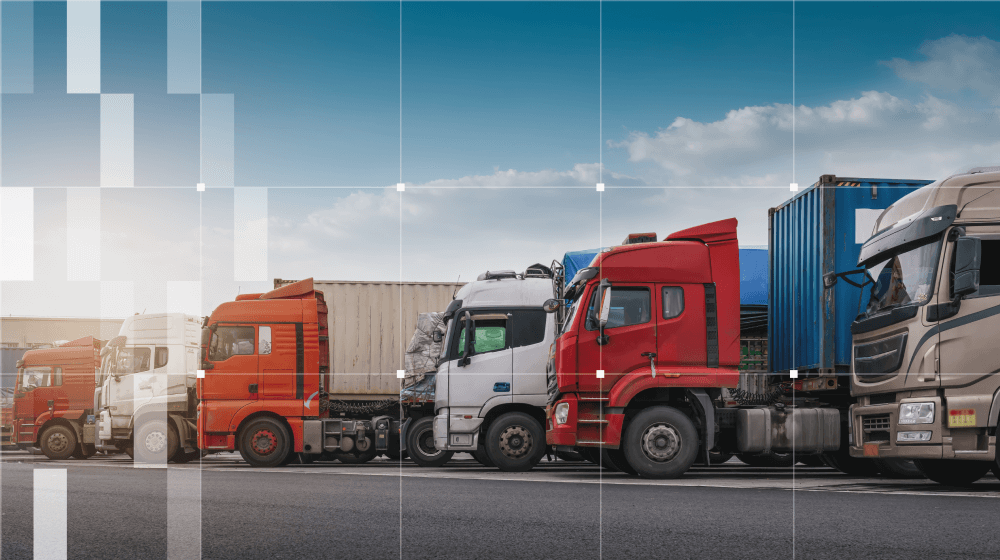


In Lithuania and beyond, companies are gradually uncovering new ways of fighting off competition as they expand from fleet management to an even broader strategy: asset tracking.
In the past, tracking assets was often seen as something only logistics or transport organizations needed. Today, however, the scope is far wider. Retail chains, construction firms, agricultural enterprises, and energy providers are turning to telematics systems to gain clarity and control over everything from assets and equipment to fuel reserves and refrigeration units.
Asset tracking is the digital control and monitoring of the location and condition of valuable business, well, assets. These include equipment, cargo, machinery, inventory, fuel, refrigeration, and energy units. A connected network of sensors and software feeds live data into a platform that managers can access from anywhere, ensuring transparency across the entire operation.
For businesses in the EU, costs are rising, competition is intensifying, and staff shortages are making every operational decision count. Losing track of a generator or a shipment can have direct financial consequences. Beyond theft, companies face losses from inefficient asset use, unplanned downtime, and disputes with contractors or partners. Digital monitoring not only prevents those losses but also streamlines decision-making and resource allocation.
Retailers track inventory and refrigeration units. Mining companies monitor heavy equipment spread across remote sites. Manufacturers and energy providers track high-value tools, containers, and power units. In short, any company with valuable resources can benefit from implementing these systems, gaining clearer oversight and stronger operational control.
For asset tracking to take hold, the surrounding digital and operational environment matters greatly, setting the stage for how adoption unfolds in places like Lithuania.
Lithuania has become a strong center for digital transformation. The country’s infrastructure is ahead of many EU peers. 5G covers 99% of the country’s territory, compared to the EU average of 94%. In manufacturing, 62% of Lithuanian companies already use Internet of Things (IoT) solutions in production or assembly, which also tells about the penetration of telematics into the business sector.
This digital readiness is supported by both government policies and a competitive local and global market. For businesses, this means there are no significant barriers to entry from the general infrastructure side and the market of solutions and service provider availability. Companies can adopt solutions without tackling low coverage or building basic infrastructure from scratch.
Lithuania is home to several leading enterprises in the field of telematics that develop systems and products used in more than 100 countries. Gurtam, Teltonika, and Ruptela are some of the names behind solutions trusted worldwide.
Wialon, a platform developed by Gurtam, currently tracks over four million vehicles and assets internationally through 2,200 partners. Teltonika and Ruptela are widely recognized on a global scale for their robust telematics devices that power reliable fleet and asset management. How exactly could an asset tracking project look like with the use of such products?
In India, Wialon helps power a conveyor belt monitoring system that has improved industrial safety, reduced production stoppages, and automated equipment control. In Germany, it lets track ATMs in transit, providing real-time monitoring and instant alerts in cases of unauthorized access to the cargo or mishandling.
These projects offer a glimpse of what asset tracking solutions can achieve in industries as diverse as logistics, manufacturing, and energy. The impact is tangible, with measurable improvements in safety, efficiency, and cost control.
For many companies, the conversation about asset tracking starts with risk reduction. They want to minimize theft, prevent misuse, and ensure operational continuity. However, once implemented, these systems often reveal opportunities to optimize operations in ways that go beyond security.
When every machine, vehicle, and tool is accounted for in real time, decisions are more informed, disputes are resolved quickly, and resources are allocated with precision. In the long run, these advantages translate into better margins and stronger growth prospects.
We have already looked at a couple of examples, but what are some more ways different industries are using asset tracking in practice?
In construction, companies are integrating asset tracking with project management systems, ensuring that expensive equipment is exactly where it needs to be.
In agriculture, farmers track fixed assets like storage silos and irrigation systems to fine-tune scheduling and reduce downtime during critical harvest periods.
In manufacturing, managers track tools and critical components, such as molds or assembly fixtures, which are often tagged or fitted with sensors to track their location and status, to prevent production delays.
In warehousing, operators monitor pallets and high-value storage racks with similar sensor-based systems, ensuring items are in the right place and ready for dispatch.
Each scenario highlights how asset tracking is evolving into a standard operating practice, and these are just examples; beyond typical uses, the solutions can be customized to track exactly what, how, and when a client needs.
In 2025, proven solutions are available today, and businesses do not need to reinvent the wheel or wait for some distant future innovation. The next step is to choose the right integration partner and tailor a system to fit specific operational needs.
Asset tracking is a practical solution that is already driving growth and protecting assets in real-time for many organizations in the region. The infrastructure is ready; the expertise is here, and the results speak for themselves.
Now is the moment to act, to integrate telematics into everyday operations, and to position your business for resilience and success in an increasingly competitive world.
